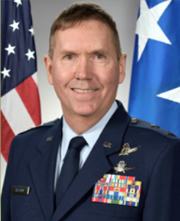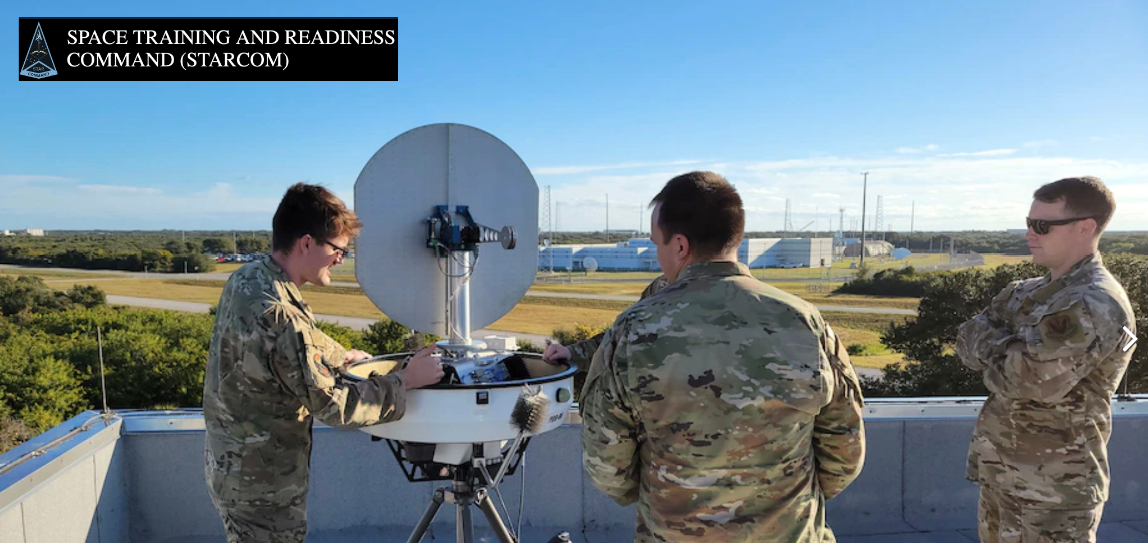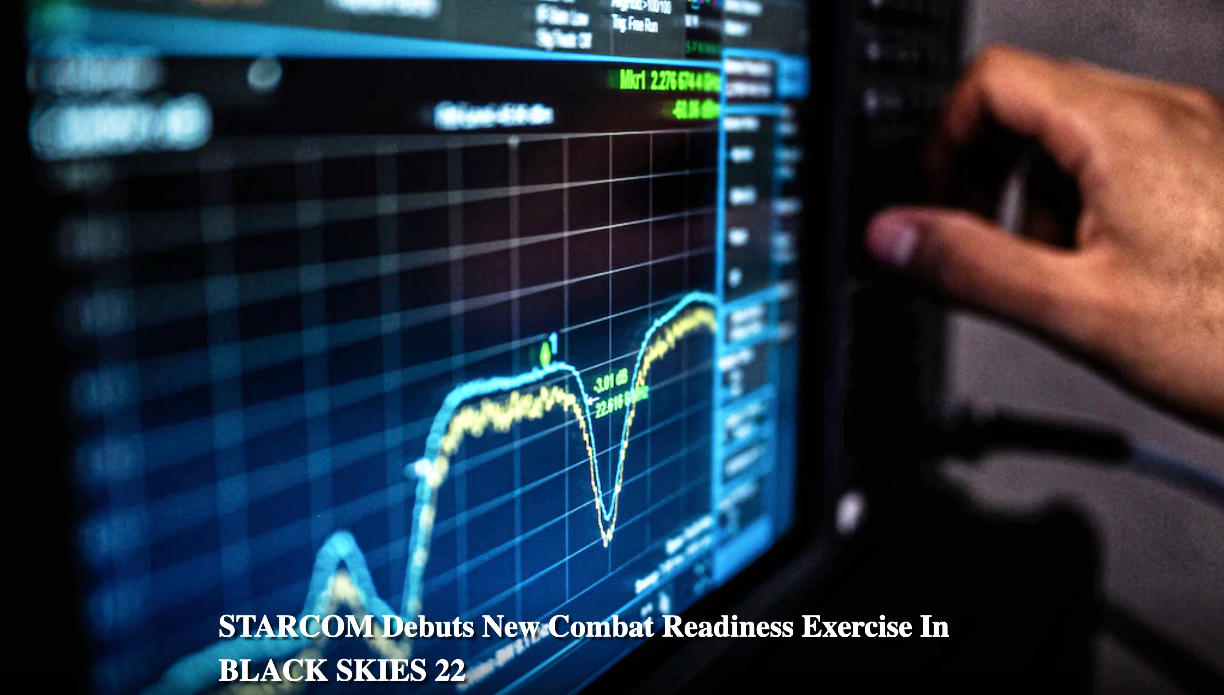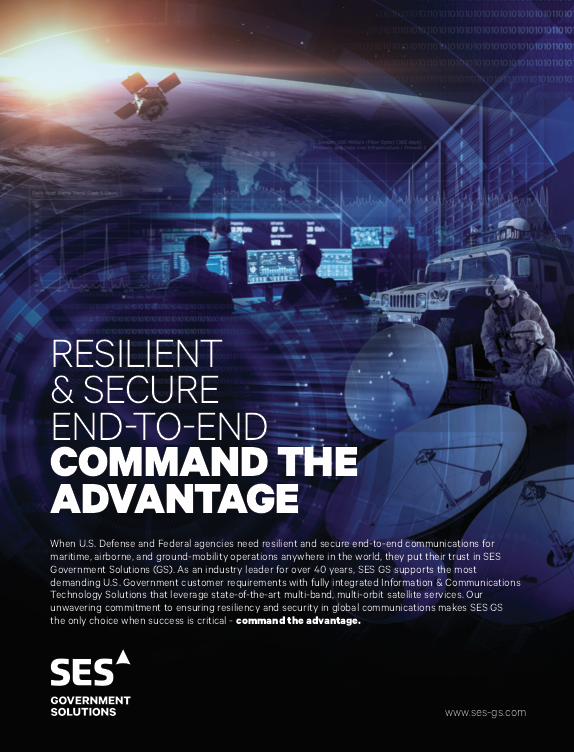STARCOM Tackles Training and Preparing U.S. Space Force Guardians for Readiness
STARCOM, the Space Training and Readiness Command for the US Space Force, is coming upon its first anniversary. Major General Shawn Bratton talks about training and developing world-class Guardians for the new and evolving space domain, and the challenges in creating realistic training, range, and test environments to support the warfighter.

John Gilroy (Constellations podcast host) Welcome to Constellations, the podcast from Kratos. Our guest is Major General Shawn Bratton, Commander, Space Training and Readiness Command of the United States Space Force. We are going to talk training of the Space Force Guardians to operate in this new frontier and some of the challenges presented by this unique domain. Welcome Major General Bratton.
Can you please tell us more about STARCOM and its mission?

Major General Bratton
Major General Bratton
Thank you John, I’m excited to talk to you about STARCOM, the U.S. Space Force, and space in general. This is certainly an exciting time.
STARCOM is, as you spelled out, the Space Training and Readiness Command for the Space Force. We do all the training and education activities, as well as the test activities. Combined together, it really comes down to preparing the force, in this case, the Space Force for competition and conflict in the space domain. As part of the broader joint force, we are taking them from street to basic training and turning them into guardians.
As a new command within the U.S. Space Force, and a new position for you personally, what is your priority?
Major General Bratton
You’re correct. This is a new command we just stood up a year ago on August 23rd, so this is our one-year birthday. I am honored to be the first commander of STARCOM.
When I came over from U.S. Space Command, some of the priorities laid out by General Raymond for Year One was to establish an independent professional militar y education for the Space Force. General Raymond felt strongly that, “Hey, we need to grow independent guardians. Take the best lessons, not just from the Air Force, but from the other ser vices, and then define our own education.”
That independent PME, or Professional Military Education, is one part, but two other priorities were building out the National Space Test and Training Complex. That’s our big technical challenge, creating the playground or gym to work out the force and try out new capabilities and new tactics and techniques, and defining Space
Force training. We get so much from our partners in the Air Force, so there are things we want to keep and stay partnered with and some areas where it makes sense for us to maybe start to go our own way.
Organizationally, what is the relationship of Space Force to the Air Force? Is it similar to the Navy and Marines?
Major General Bratton
In some ways, absolutely. We are all in the department of the U.S. Air Force and Secretary Kendall, the service Secretary for both the Air Force and the Space Force, relentlessly states, “one team, one fight” within the Department of the Air Force.
Secretary Kendall is our civilian leadership in the Pentagon, and beneath him is Chief of Staff for the Air Force, General Brown, and the Chief of Space Operations, General Raymond, my boss. The next echelon down are the field commands. There are three in the Space Force. STARCOM is one. We do training, education, and tests. Operations command and acquisition command are the other two.
Other than what’s been done in the past with the other services, how are you determining the best way to build out new training and testing programs for a service area that is so vast and unmapped?
Major General Bratton
It’s exciting to be on the ground floor. I started my professional career as a high school teacher, so I’ve been in the classroom and that’s my background, and so, it makes sense to be here. But there is a lot of new ground to break.
We’re really thinking through what does it mean to be a guardian, everything from the kind of culture to the very technical aspects associated with space operations, and how to impart that. And how can we benefit not just from the Department of Defense, but also from what NASA is doing, what commercial companies are doing, and how do we bring some of those best practices into the Space Force, and exchange information as we grow as part of the broader space industry.

You’re operating in a dynamic environment, where things change almost constantly, from new launches to new technology. You’re in a position where you have to cover all the basics yet have to have some flexibility for the new stuff that’s going to happen in six months. How can you train and prepare for what in part is the unknown?
Major General Bratton
One of the benefits I think that will prove out over time is that being such a small force lets us be really agile. There’ll be about 18,000 folks in the Space Force, about half in uniform, where in military, that’s just a fraction of the size compared to the other services. And so, the idea that all of the training and education falls within a single organization, STARCOM in this case, as something new happens, we can introduce it correctly into the curriculum.
Last year we published new guidelines on planning for space operations within the Department of Defense, one of our first doctrine publications for the Space Force. As soon it came off the presses, we could take it and hand it to the trainers and educators to incorporate immediately into the classrooms across the Space Force. And so in responding to rapid innovation, whether within the department or industry, our small size will benefit our agility.
With satellites operating in space how do you do live testing and training? What are some of the technical challenges you’re working through?
Major General Bratton
Great question. You’ll hear the Pentagon staff talk about operational test and training infrastructure, and we put a label on it called the National Space Test and Training Complex, but generally we just call it the range.
So, how are we going to operate and test and train on a space range? As you know, it’s so different than land, sea, and even the air domain, where you can carve out some real estate and declare a piece of geography set aside for test and training purposes, such as Nellis Test and Training Range in Nevada for Air Force, or the National Training Center in California for the Army.
Certainly, we can’t do that in Low Earth Orbit (LEO) or in Geosynchronous Orbit (GEO). So we have to think about it differently, in how we meet our test and training objectives. For things that we have to do live, how do we communicate that, and how do we think about safety and making sure our intentions are clear so no one misunderstands the activity? But also, how do we benefit from the advances in digital space? What can I do in the simulators, in a digital environment that I don’t have to do live? And do the digital models have the fidelity to deliver results that are accurate against live modeling?
Lots of folks do this well, certainly NASA being one. We’re tr ying to learn from and understand how they do test and training in the digital space and on simulators before they go live in a range - like environment.
When training for a space mission, it seems your guardians would require the realism of a contested environment. Can you train for this within a virtual reality environment?
Major General Bratton
One of the challenges is how do I weigh the value of live training versus training in a simulator? And how do I know that one way is better than or less than the other. I had a chance to talk to a couple astronauts about the incredible training capabilities that NASA has and employs to prepare them for going on orbit and conducting human space flight missions.
The amount they do in the simulator, such as practicing docking, for example, as relayed to me from the astronaut community was, “Hey, that first live dock was almost just like that last dock in the simulator,” meaning that the fidelity of the simulators and the level at which they’re operating really prepare them for live space operations. That requires incredible investment in simulating and training capability. So we’re trying to balance that and understand how to measure what can we do virtually, make sure there is cost savings with it, or some other benefit that we realize.
And then, how do we think about live training and what things absolutely have to be done live in the training environment. We don’t have all the answers, but we are learning from and relying on some of the experts and then working hard to really come down to an end state for the Space Force.

What are the major considerations for creating a space training and testing environment that’s both digital and realistic? Are you getting help from industry and can you give us an example?
Major General Bratton
One of the greatest technical challenges ahead of STARCOM is the build out of the test and training complex, this weighing of value between digital and live in the digital space. We’re getting a lot of help from other parts of the Space Force. The Space Warfighting Analysis Center, which does a lot of our architectural analysis for future systems, is starting this process where they build a digital model of a system that we might acquire in future years.
As we work that through the acquisition cycle, what we hope is that once the department decides, “Hey, we are going to acquire this system”, that digital model gains fidelity and interaction with industry has already started. And so we’re all contributing to the fidelity of the model, the accuracy of the model Eventually, I get my hands on it and I can use that same high-fidelity model and use that for test and training. And that works great. It works great for friendly systems. And then we have to rely on the intelligence community really to try and help us best understand what the potential adversaries are operating in their models, and then how do we bring those together in a training environment?
Can you tell us more about the Space Test Enterprise Vision?
Major General Bratton
Yes, that’s one of the early documents from the Space Force, before STARCOM, to do with roles and responsibilities within the Space Force on who does what and how can we do things. Where is innovation that we can employ? How can we speed up the process to get equipment into the hands of operators faster? One thing the Vision talks about that we hit on is what we call integrated testing.
Historically the Department of Defense does developmental testing, which has to do with, “Did the contractor deliver the thing that we asked for? Does it meet the specifications as designed?”
When a new aircraft or a new land vehicle comes online, they’ll run it through operational testing, and put it in the hands of the operators and see what they can do with it. And how to integrate it into a broader architecture or set of capabilities. We’re trying to combine those things into integrated tests.
The Vision really speaks to how we think we’ll gain advantage in the cost and delivery portions of the acquisition process delivery schedule. For integrated tests, we’re putting operators and professional testers who work for STARCOM, operators who work for space operations command, and then the acquirers and engineers all together in the same room to field new capabilities.
I understand Air Force and Space Force each have red flag exercises. How are they different?
Major General Bratton
Yes, they are very different. Red Flag is an incredible event that takes place at Nellis Air Force Base. It’s a large, live fly aircraft exercise where the Air Force and allies and the other services all come together and fly multiple evolutions over the ranges of Southern Nevada. They’re presented challenges they have to fight through, flying against live or aggressor units that the Air Force operates as adversary, doing that simulated combat over Nevada.
Space Flag is not that, there’s no live activity. It really is a limited use of simulation, using the capabilities that we have today. It’s more of a planning exercise where if the adversary does this, now what will you do? In some cases, we’re back on whiteboards, thinking through the tough problems, and explaining it to the leadership for the event, and then presenting the trainees with another challenging scenario.
We are definitely trying to up our game, but I don’t think we’ll go as far as Red Flag and the incredible capability that the Air Force has to do so much live. But I think we will start to introduce maybe some more live elements in what the Space Force is going to.
What is next on horizon?
Major General Bratton
We’ll continue to run Space Flag, but we’re going to begin a new series of exercises that we call the Sky Series. So black skies, red skies, blue skies, and each of those is four different communities. Black skies, for example, will be for the electronic warfare community. Blue skies will be for the cyber operators in the Space Force, and so on. A focus for us is to solve the training complex, the range problem first so we have a place to go take the force to work out and own our skills. Then you’ll see us start to use those in both Space Flag and the Sky series as that comes online over the next few years.
The views expressed in this article do not officially represent the views of the U.S. Military or the United States government. The appearance of U.S. Department of Defense, DoD visual information, does not imply or constitute DoD endorsement.
This interview was edited for brevity. You can find the full interview here.
Listen to Constellations podcasts as they become available and subscribe to this content at this direct link...


